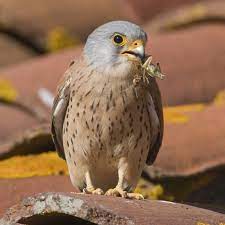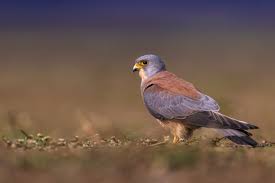The Lesser Kestrel, scientifically known as Falco naumanni, is a captivating bird of prey that graces the landscapes of Europe, Asia, and Africa with its agile flight and vibrant appearance. With its unique behaviors and adaptations, this falcon has captured the attention of birdwatchers and conservationists alike. Join us as we explore 16 intriguing facts about the Lesser Kestrel, shedding light on its remarkable characteristics and its role within its diverse habitats.

1. Petite and Powerful: The Lesser Kestrel is the smallest species of kestrel, known for its compact size and striking appearance.
2. Migratory Marvels: These birds embark on impressive migrations, covering thousands of miles between their breeding and wintering grounds.
3. Colorful Plumage: The males flaunt striking blue-gray plumage with chestnut markings, while females exhibit a more subdued appearance.
4. Sociable Natures: Lesser Kestrels often nest in colonies, fostering a sense of community and safety during the breeding season.
5. Urban Adaptation: These falcons are known to nest on buildings and structures within cities, making them an integral part of urban ecosystems.
6. Insectivorous Diet: Their diet mainly consists of insects, such as grasshoppers, beetles, and small reptiles.
7. Impressive Hunting Techniques: Lesser Kestrels use a combination of hovering and agile flight to capture prey in mid-air.
8. Monogamous Pairs: During the breeding season, they form monogamous pairs, exhibiting strong bonding behaviors.
9. Camouflaged Nests: Their nests are often hidden in crevices, providing protection from predators.
10. Conservation Concerns: Habitat loss, pesticides, and hunting pose threats to the Lesser Kestrel’s populations.
11. Roof-Nesting Raptors: Their habit of nesting on roofs and buildings has both positive and negative implications for human interactions.
12. Falconry History: In the past, Lesser Kestrels were used in falconry due to their manageable size and hunting abilities.
13. Cultural Significance: These falcons hold cultural significance in various regions, symbolizing power and agility.
14. Important Ecosystem Role: By controlling insect populations, Lesser Kestrels contribute to ecosystem balance.
15. International Collaboration: Conservation efforts across borders are vital to the protection of these migratory birds.
16. Ecotourism Opportunities: Observing Lesser Kestrels in their natural habitats has become a popular activity, supporting local economies.
Conclusion
The Lesser Kestrel, with its captivating appearance and unique behaviors, offers a glimpse into the dynamic world of raptors. As we delve into these 16 intriguing insights, we gain a deeper appreciation for the role these birds play in maintaining the delicate balance of their diverse habitats.



















Add Comment